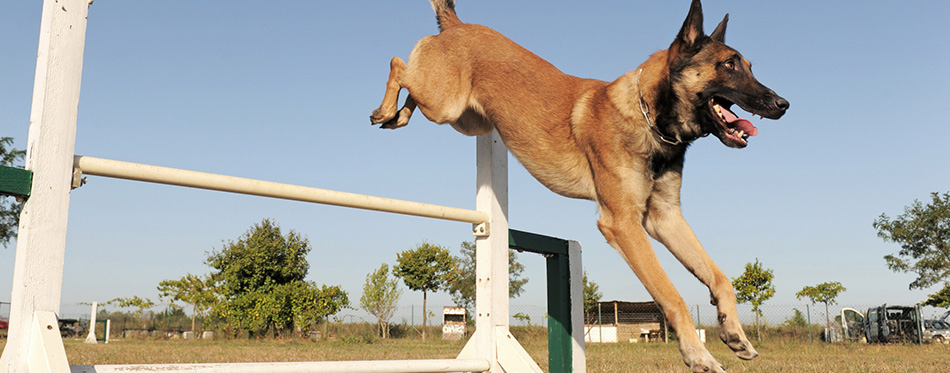Training is an essential aspect of pet care. It involves the issuing of verbal cues, the marking of the desired behavior, and the giving of a reward. It requires patience, too. Unfortunately, if a dog is deaf or is having difficulty hearing, training can be challenging. Here is how to train a deaf dog.

Look for Another Way to Get Your Dog’s Attention
Teaching requires getting the dog’s attention. We often do this by calling their name or using other verbal cues. A deaf canine or one that has hearing impairment will not be able to hear these verbal or auditory cues. As such, pet owners should try to look for other ways of getting the dog’s attention before initiating the deaf dog training.
You can get the attention of a dog that is far from you by waving your arms. This will get the pet’s attention. If it does not work, then you can try the flashlight method. Point the beam of the flashlight in the direction of your dog. Avoid shining the light into the dog’s eyes. Turn the flashlight on and off to get your furry friend’s attention.
You can also consider tossing a toy in the dog’s line of vision. This will make the pet want to know where the toy came from. There are pet parents who are also lucky enough to get the attention of their hounds by stomping their feet. Stomping creates vibrations that will alert the dog to your presence. Speaking of vibrations, you can use a vibrating collar. Activate the collar if you want to get your dog’s attention. For a wider selection of choices, check out our dog LED collars and dog collar guides.
The key here is to associate the attention-getting action with something rewarding. For instance, if your dog looks at you right after activating the vibrating collar, then you should give your pet dog a tasty treat. The same is true with stomping or waving your hands. As soon as the dog puts its attention on you, you should reward it.
Consider Using Hand Signals
Training a deaf dog basic obedience commands requires the replacement of verbal cues with visual markers. Most pet parents and dog trainers use hand signals in communicating with their dogs. There are resources that provide basic hand signals for training deaf dogs. You can use these hand signals or you can create your own.
Using hand signals is almost the same as issuing a verbal command. Always start by getting your pet dog’s attention. Reward it with a tasty and healthy treat. Normally, we will issue a verbal command and assist the dog in performing the maneuver. This is not possible with a hearing impaired canine. So, you will use hand signals instead of the verbal command.
You will also have to consider looking for a visual marker. The traditional method of training dogs requires using a clicker or the giving of a verbal marker. Most pet owners will use “good boy!” or some other verbal cue. Your deaf pet will not be able to respond to these. Hence, using the thumbs up sign is often a good visual marker to use in such cases.
A good example will be teaching Fido to sit. Get its attention and reward. Make a hand signal of your choosing. Lure the dog going into the sitting position. Mark the desirable behavior by using the thumbs up sign and give the treat at once. Your dog will associate the thumbs up sign with a tasty snack.
Related Post: Dog Treats

Learn How to Use Canine Sign Language
Pet owners who are training their hearing impaired dogs advanced obedience commands often use dog sign language. Most of them refer to the American Sign Language for very simple words they can use for canine training. It would also help if you can teach your canine friend dog sign language commands.
This is similar to using hand signals. As such, it is best to choose those words that you are going to use every day with your dog. Always consider the pet’s routine each day. Identify what actions you need to teach your dog so that it will be able to function in a safe manner. Determine the simple words that you can teach to your pet using sign language.
It is also possible to create your very own set of sign language. Make sure that you are consistent in using a particular sign to communicate with your pet. Consistency is very important, as you do not want to confuse your pet.
Be Mindful of the Dog’s Tendency to Become Easily Startled
It is wise to never approach your deaf dog from behind. This can startle your pet. One should also avoid touching the pet from behind. There is a good chance that the dog will snap or snarl out of fear if it gets startled.
Try to desensitize your canine pet from getting startled easily. Start by facing your canine friend. Touch it in a very gentle manner on its shoulder and back. Reward it with a yummy treat right after touching. Keep on doing this “session” throughout the day. This will help your pet learn that touching can bring a reward.
When it is already comfortable with the touching part, you can start teaching it to respond in a more positive manner when touched by a person coming from behind. Face your canine friend first. Gradually move to the back until it no longer sees you. Always use yummy treats afterwards.

Do Not Underestimate the Importance of Verbal Communication
It is true that your dog cannot hear you. However, it can also see the movement of your lips. It knows if you are talking or not. That is why it is imperative that you still issue a “verbal” cue while also making a hand signal or a sign language. This will give the dog the impression that you are trying to communicate with it.
Keep in mind that a deaf dog may not be able to hear you. This does not mean that it cannot use its other senses to communicate. Be natural in your bodily movements.
Training a deaf dog is almost the same as teaching a normal canine. You will only need more patience and perseverance. You will also need a good system of visual cues to replace those auditory commands and markers.
Source:
- How To Train A Deaf Dog – AKC

